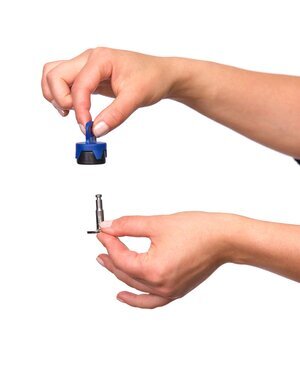Assisting health care providers to restrain COVID-19 patients
Estimated reading time: 2 minutes, 57 seconds
CHALLENGES HEALTH CARE PROVIDERS FACE DURING THE PANDEMIC
By now, we are all too familiar with the impact the current pandemic is having on our lives and those of our family members, friends, neighbours and community. What we don’t hear so much about is the effect it’s having on health care providers. These include nursing staff in medical facilities and long-term care homes, hospital transportation providers and officers in correctional facilities.
Many of them struggle with exhaustion, because they are so overloaded these days. They fear becoming infected and infecting others, and feel powerless to handle patients' conditions. Many facilities no longer have the manpower to deal with violent patients when they come in.
Health care workers need and deserve more comprehensive support.
HOW THE PINEL MEDICAL DE-RESTRAINT SYSTEM SUPPORTS HEALTHCARE WORKERS DURING THE PANDEMIC
Our state-of-the-art products are designed to protect the safety and wellbeing of health care providers who must deal with increasing patient violence, or physical incapacitation, during these difficult times.
We use high-tech fabrics like Kevlar™, that are stronger than leather, and are anti-microbial, washable, and gentle on the skin. We’re told they are the most comfortable restraint system for patients, including someone with COVID-19. Our strap opens the chest to help them breathe, and can be adjusted to exactly what they need.
So many COVID patients must be rotated onto the stomach or back, and our equipment makes it easier for staff to turn them over. Our products can be adjusted to meet any patient need, for instance, preventing the patient from pulling out tubes, or making the straps long enough to enable the patient to feed themself.
The locking mechanism is simple and quick to release. This enables our products to be fast, firm, friendly and flexible. They adapt to any situation and work with all hospital policies.
While data shows that traditional restraints take 10 minutes, 20 seconds to apply, ours take a proven and recorded 30 seconds… so important for violent patients who enter an ER department. We also provide training on how to use our products to increase preparedness and efficacy in crisis management.
WHO USES PINEL MEDICAL’S STATE-OF-THE-ART
DE-RESTRAINT SYSTEM?
Our De-restraint System is sold all over the world, and used in a variety of institutions, including hospitals, ER departments, psychiatric departments, air ambulances, correctional facilities and long-term care facilities.
90% of hospitals in Canada use our products.
They are also widely used in the top U.S. medical facilities. We are one of the leading restraint system suppliers in China and Japan. As well, we provide our products widely across Europe – in Switzerland, France, and Italy.
WHAT OUR CLIENTS SAY ABOUT THE PINEL MEDICAL
DE-RESTRAINT SYSTEM
Our clients especially appreciate our equipment during the pandemic. Here’s what one of them told us recently:
“It encourages us to get the restraints on quickly and also get the patient or client out of the restraints as soon as possible. They are versatile and flexible – we can change the length, add and take away restraints to make the patient as comfortable as possible. I’ve had the opportunity to both use and train with the system. It’s very simple to train and easy to use with the support and clinic staff.”
— Calvin Miller, Emergency Management Consultant MA/CHPA
PINEL MEDICAL WILL HELP YOUR HEALTH CARE TEAM MANAGE COVID-19 MORE EFFECTIVELY
If you’re interested in learning more about how we can support you and your team manage COVID-19 patients more safely and efficiently, please book your free consultation with us. We look forward to helping you find the right solutions for your specific needs.




